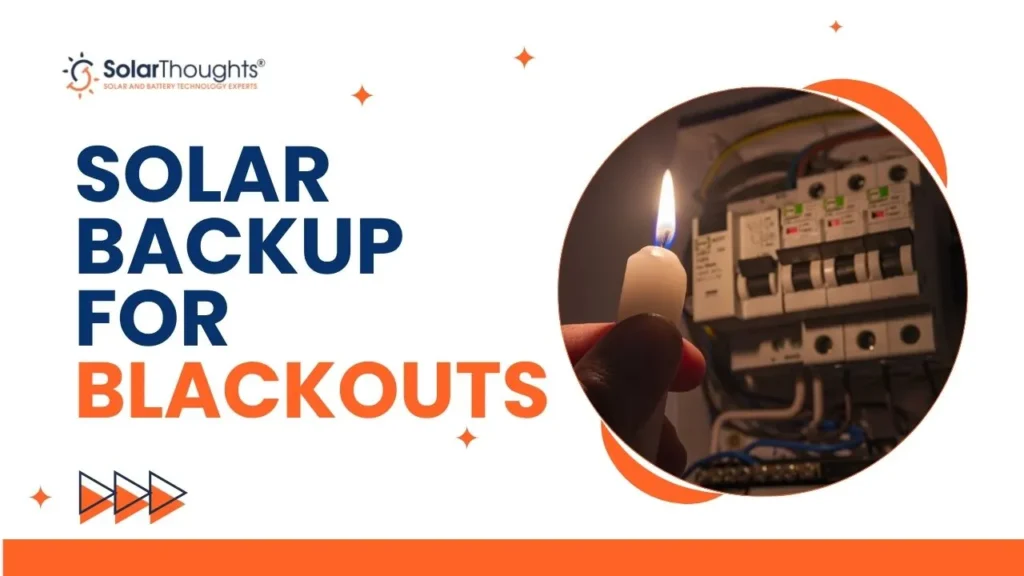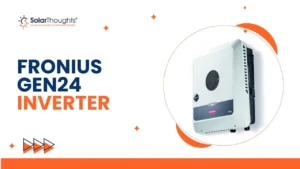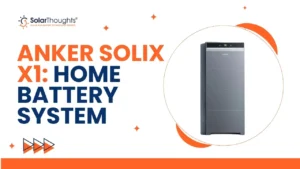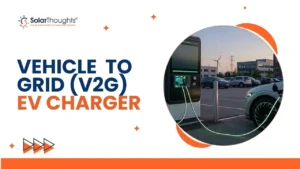The world of home solar batteries is growing fast in Australia. Many homeowners want to add batteries — especially with new government rebates. A big reason to get a battery is for backup power when the grid goes down. However, many people misunderstand what “backup” truly means. It is important to know the difference between using your battery at night and having power during a blackout. This guide from SolarThoughts® will explain how battery backup works in our homes. We will cover why it is smart to back up only some parts of your home, not everything. This helps you get the most from your system, especially during a power outage.
Table of Contents
ToggleNighttime Power vs. Blackout Backup (EPS Explained)

Many people think battery backup means their battery will power everything, like their pool or air-conditioner, all night. This is a common mix-up. There is a clear difference between your battery supplying power at night when the grid is working and supplying power during a blackout or grid outage. We call this blackout power an Emergency Power Supply (EPS).
When the grid is on, your battery (as supplied and managed by SolarThoughts®®) mostly tries to keep your home’s power use from the grid at zero. It charges when your rooftop solar is high and discharges at night. This means it will try to run all your appliances, no matter what, until the battery is empty or your home needs more power than the battery and inverter can give.
There is one exception for nighttime use. You can program your inverter not to discharge during certain times. For example, if you have an EV charger and a special power plan, you might get very cheap electricity from midnight to 6 AM. You can set your inverter to use grid power during these hours instead of your battery. This saves your battery from extra wear and tear for only a small cost savings.
So, during normal grid operation, your battery usually powers everything. However, a blackout is a different situation entirely. During a blackout, the grid is off. Your system needs to switch to EPS mode. In this mode, you decide which circuits and appliances are most important. We are not talking about going completely off-grid here. These are grid-connected systems with a backup feature. Blackouts in places like South-East Queensland are rare but can last a long time. Because these systems are not designed for full off-grid living, you must make smart choices about what to back up.
Why Partial Backup Is Often the Best Choice
SolarThoughts® recommends backing up only a few key circuits in your home, rather than the entire house. There are three main reasons for this.
Reason 1: Prevent Your Battery from Draining Too Fast
Imagine a blackout happens while you are sleeping. If your whole house is on backup, large appliances can quickly use up all your stored battery power. You might wake up to an empty battery. Large power users like:
- Pool pumps
- Hot water systems
- Large air-conditioning units
These items can drain a battery very quickly. If you do not need them during a short blackout, it is better to keep them off the backup circuit. This makes your battery last longer for truly essential needs.
You might wonder if your solar panels will just recharge the battery during a blackout. Yes, they usually will if your system is correctly designed and installed by a qualified providers, with a DC-coupled battery and an inverter that supports “black-start” (recharging from solar during an outage). This is true for modern systems. However, do not just assume this is true. Make sure your installer designed the system correctly. Some older or poorly installed systems might not charge from solar in a blackout.
Even with a large battery, you still want to manage your power use during an outage.
Reason 2: Inverter Power Limits
The type of inverter you have greatly affects your backup power. This is especially true for homes with three-phase power.
Single-Phase Inverters
For a single-phase inverter, like a 10 kW unit, you can usually draw a good amount of power, maybe 8 to 10 kW, before it trips.
Three-Phase Inverters
Three-phase inverters are different, and this is where many large homes run into problems. A 10 kW three-phase inverter acts like three smaller single-phase inverters. It can only put out a limited amount of power on each phase, often around 3.5 to 4 kW per phase. This means you can easily trip a three-phase inverter, even if you think your overall solar system is huge.
So, while many small LED lights draw very little power, running a few essential kitchen appliances can quickly overload one phase of a three-phase inverter. SolarThoughts®® always assesses the inverter limits in the design stage, so you don’t face this issue during a blackout.
Reason 3: Cost and Electrical Safety Upgrades
The third reason to choose partial backup is the cost of electrical safety upgrades. To back up a circuit, the safety switch (called an RCBO) for that circuit must meet current Australian standards. Older homes might require upgrades, which come at extra cost. If you only back up a small number of circuits, the upgrade cost is much lower.
How to Choose Your Essential Circuits
Deciding which circuits to back up is key. Think about what you absolutely need during a power outage. Here are common items people choose to back up:
- Kitchen: Refrigerator, a few power points for kettle or toaster (mind inverter limits).
- Lighting: Lights in key areas like living rooms, bedrooms, and bathrooms.
- Internet/Communication: Internet modem and WiFi router.
- Comfort (Optional): A small split-system air-conditioner if you’re worried about extreme temperatures.
Practical Tips for Identifying Circuits
To figure out which circuit breakers control your essential items:
- Get a small plug-in lamp or hair dryer.
- Plug it into a power point you want to back up.
- Go to your switchboard and, with someone inside your home, turn off circuit breakers one by one until the lamp/hair dryer goes off.
- Mark that breaker. All power points on that circuit will be backed up if you include that circuit.
Prepare for Your Battery Backup System
Understanding the difference between everyday battery use and emergency backup is important. Choosing a partial backup can save you money, protect your battery from draining too quickly, and prevent inverter trips. This ensures you have power for what truly matters during a blackout.
At SolarThoughts®, we design smart, reliable solar battery systems tailored for blackouts and everyday savings. Our services include system design, safety switch upgrades, inverter/integration checks, and full commissioning so you’re blackout-ready and grid-connected. If you live in Brisbane, the Gold Coast, and the Sunshine Coast – and are considering a solar battery system, our team is here to help.
Visit our website or contact SolarThoughts® to learn more about how we can create a customised blackout-backup solar battery system for your home.






